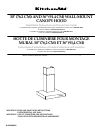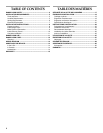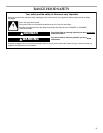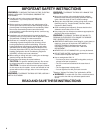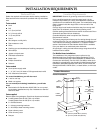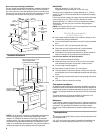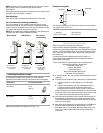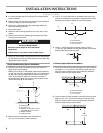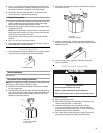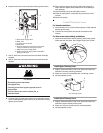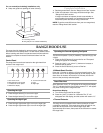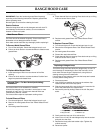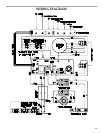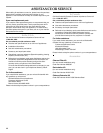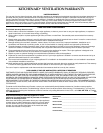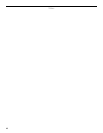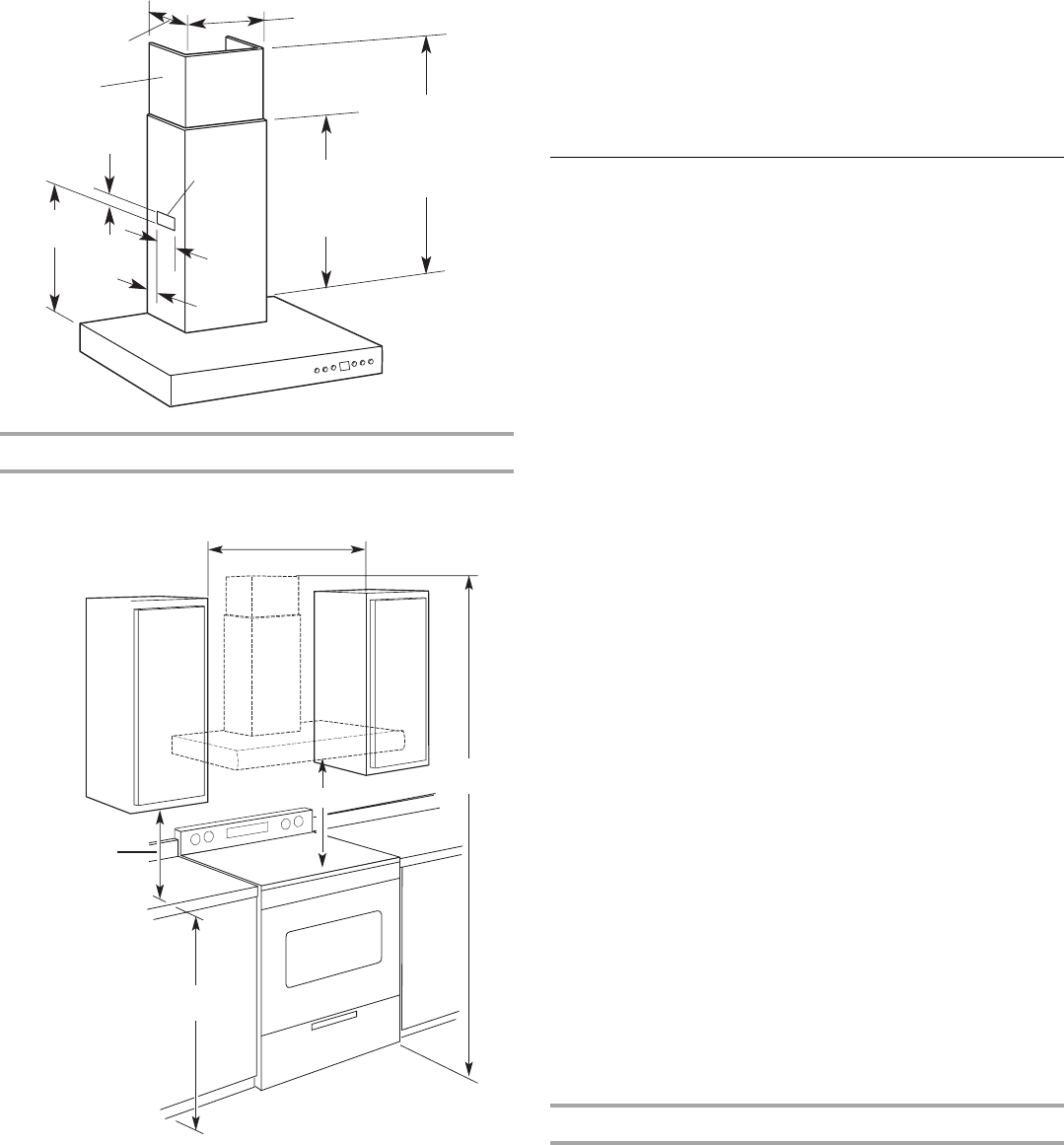
6
Non-vented (recirculating) Installations
For non-vented (recirculating) installations, optional Recirculation
Kit Part Number W10271501, must be used. This kit includes a
new lower chimney cover that replaces the lower chimney cover
shipped with the range hood, a diverter with extensions, 2 grids
for inserting into the lower chimney, and a charcoal filter.
Installation Dimensions
*NOTE: The range hood chimneys are adjustable and designed
to meet varying ceiling or soffit heights depending on the
distance “X” between the bottom of the range hood and the
cooking surface. For higher ceilings, a Stainless Steel Chimney
Extension Kit Part Number W10271503 is available from your
dealer or an authorized parts distributor. The chimney extension
replaces the upper chimney shipped with the range hood.
IMPORTANT:
Minimum distance “X”: 30" (76.2 cm)
Suggested maximum distance “X”: 36" (91.4 cm)
Chimneys can be adjusted for ceilings between 8' ³⁄₈" (2.55 m)
and 9' 6" (2.90 m) in both vented and non-vented (recirculating)
applications.
If you have shorter ceilings, the upper chimney can be shortened
by removing up to 5¼" (13.3 cm) off the bottom for vented
applications and 11¼" (28.6 cm) for non-vented (recirculating)
applications. This will give you a minimum ceiling height of
7' 8" (2.34 m).
NOTE: If the upper chimney is cut for your application, the lower
chimney bracket will not be used.
Venting Requirements
(Vented Models Only)
■ Vent system must terminate to the outdoors, except for non-
vented (recirculating) installations.
■ Do not terminate the vent system in an attic or other enclosed
area.
■ Do not use 4" (10.2 cm) laundry-type wall caps.
■ Use metal vent only. Rigid metal vent is recommended.
Plastic or metal foil vent is not recommended.
■ The length of vent system and number of elbows should be
kept to a minimum to provide efficient performance.
For the most efficient and quiet operation:
■ Use no more than three 90° elbows.
■ Make sure there is a minimum of 24" (61.0 cm) of straight
vent between the elbows if more than 1 elbow is used.
■ Do not install 2 elbows together.
■ Use clamps to seal all joints in the vent system.
■ The vent system must have a damper. If the roof or wall cap
has a damper, do not use the damper supplied with the range
hood.
■ Use caulking to seal exterior wall or roof opening around the
cap.
■ The size of the vent should be uniform.
Cold weather installations
An additional back draft damper should be installed to minimize
backward cold air flow and a thermal break should be installed to
minimize conduction of outside temperatures as part of the vent
system. The damper should be on the cold air side of the thermal
break.
The break should be as close as possible to where the vent
system enters the heated portion of the house.
Makeup air
Local building codes may require the use of make up air systems
when using ventilation systems greater than specified CFM of air
movement. The specified CFM varies from locale to locale.
Consult your HVAC professional for specific requirements in your
area.
Venting Methods
This canopy range hood is factory set for venting through the roof
or through the wall.
A 6" (15.2 cm) round vent system is needed for installation (not
included). The hood exhaust opening is 6" (15.2 cm) round.
overall chimney
height
Upper
chimney
11¹³⁄₁₆"
(30.0 cm)
10¼"
(26.0 cm)
3⁹⁄₁₆"
(9.1 cm)
Vent
opening
on each
side
2⁷⁄₁₆"
(6.2 cm)
5⁵⁄₁₆"
(13.5 cm)
21¼"
(54.0 cm)
lower
chimney
height
12⁵⁄₈"
(32.0 cm)
25⁵⁄₈"
(65.1 cm)
min.
37¼"
(94.6 cm)
max.
18" (45.7 cm) min.
clearance upper
cabinet to countertop
X*
36" (91.4 cm)
countertop height
See Note*
30" (76.2 cm) or 36" (91.4 cm)
cabinet opening width
(if installed between cabinets)



